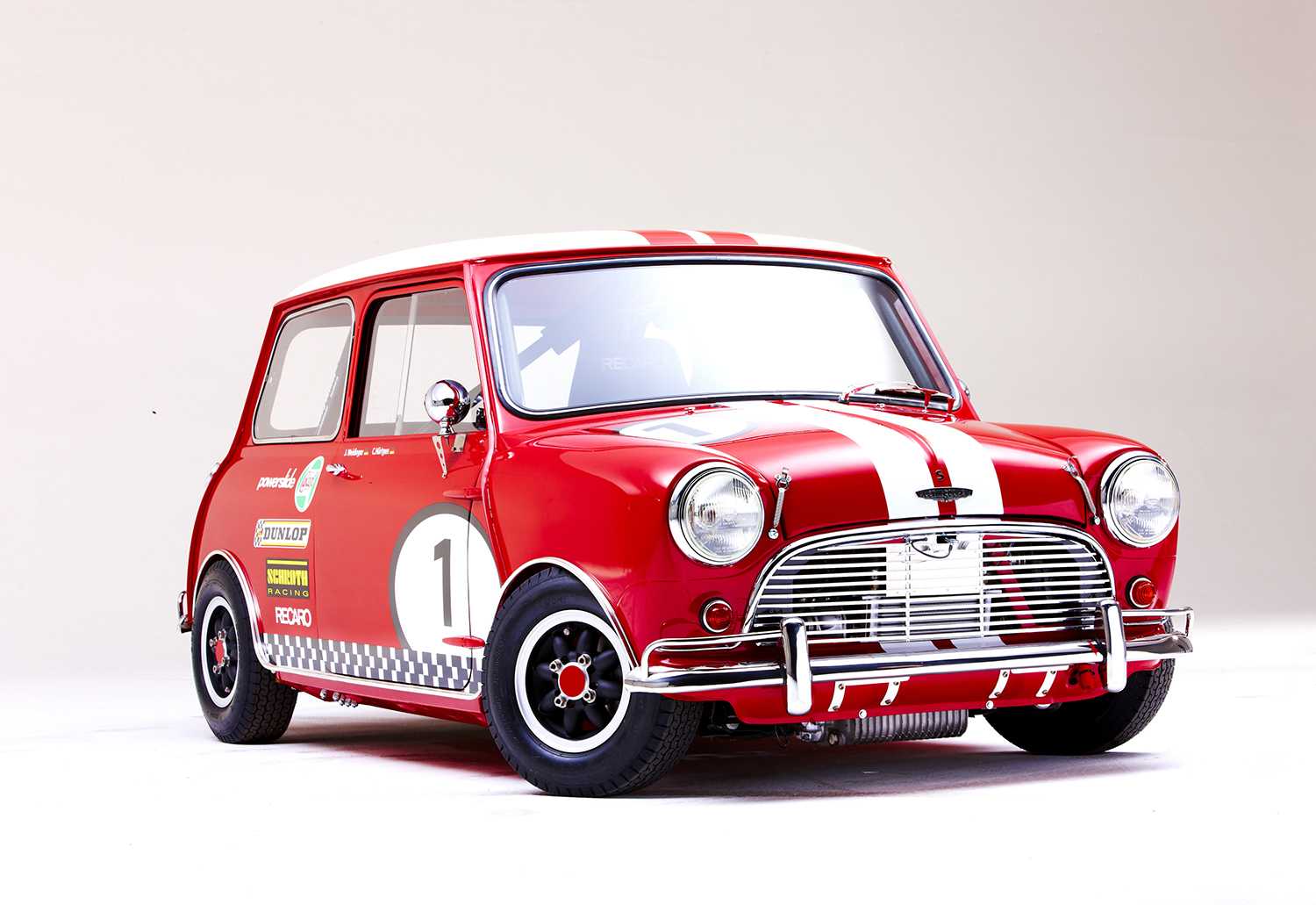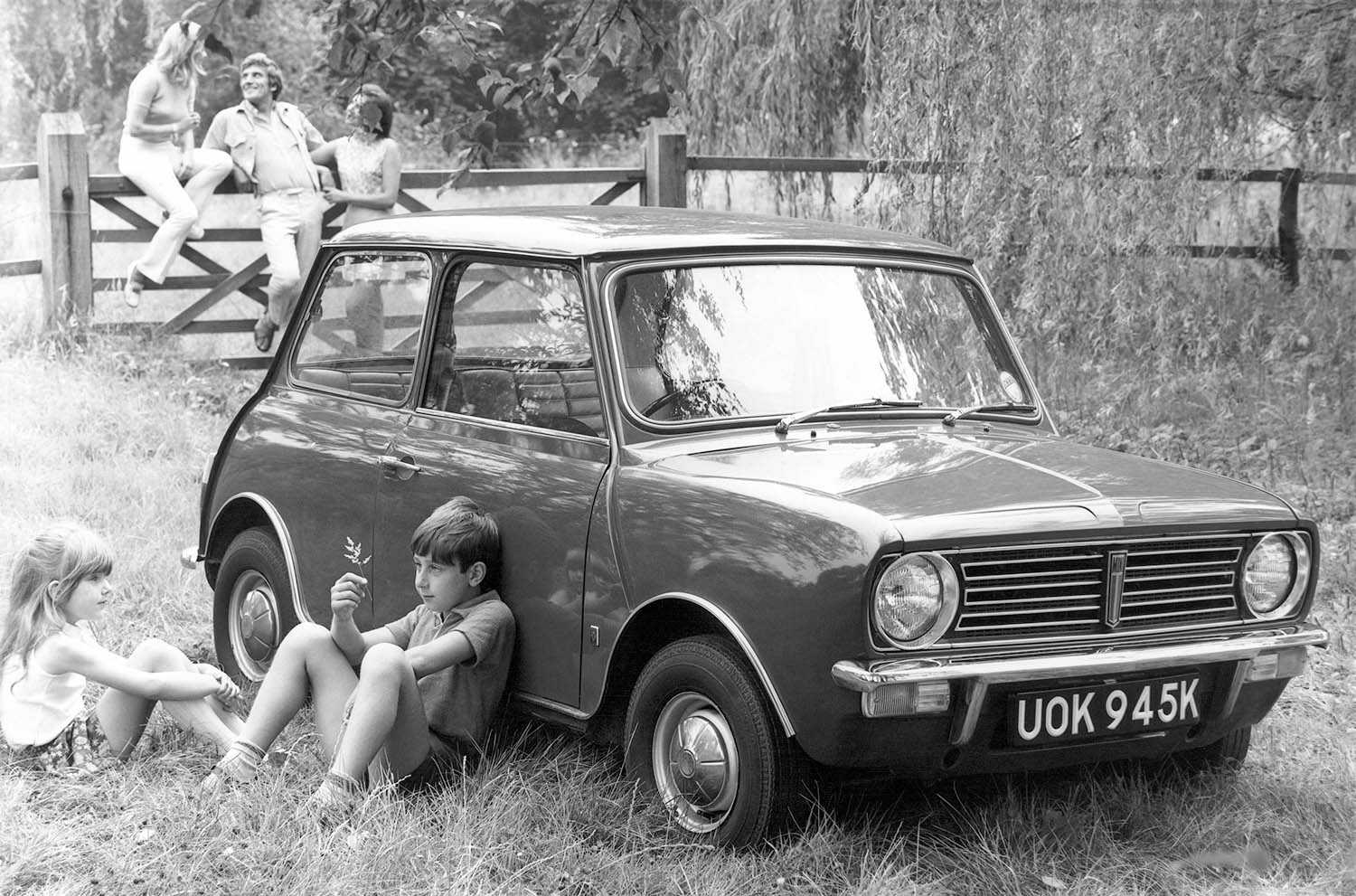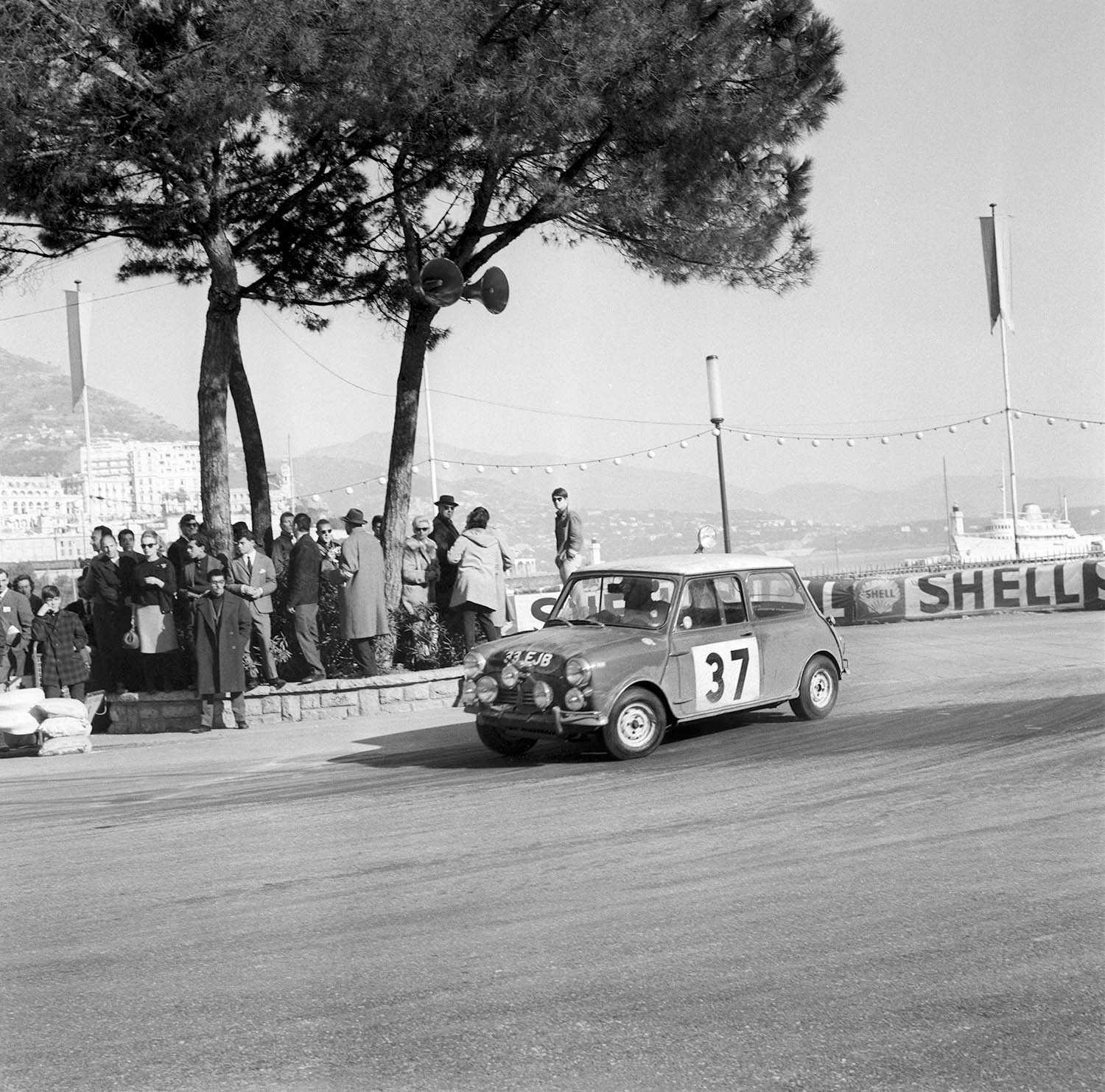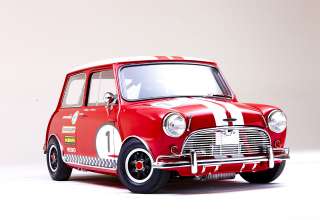The Mini is, without doubt, one of the most important models in motoring history. It’s cool, and classless. And it’s enduringly youthful – in character and in how it makes you feel. But the best thing? There’s one for every taste and every pocket.
In 1959 a car was born that set new standards. The Mini was small in dimensions, as its name implied, but its sub-three-metre footprint still needed to offer enough room for four people and their luggage. With that in mind, Alexander Arnold Constantine Issigonis came up with an ingenious plan, mounting the engine transversely at the front. This was such a pioneering construction that its creator soon became Sir Alec Issigonis – and the rest, as they say, is history.
A preposterously low kerb weight of 620 kilograms and low centre of gravity means that even the smallest 34 hp engine delivers the driving fun for which the Mini is renowned. In few other cars does the go-kart comparison ring so true. Amid the hustle and bustle of urban roads in particular, the Mini tempts its driver into flicking it around corners with almost childlike glee. Such are its built-in cuteness and likeability that other road users generally forgive any impetuousness by the next set of traffic lights. Clearly a roadgoing go-kart such as this will also be very much at home on twisty country roads – and in historic racing events, for that matter. However, taking the classic Mini on long autobahn journeys requires the driver to roll with the punches to some extent. Having said that, stories abound of people driving the small British car around the world.
Almost 5.4 million examples of the classic Mini were built during its 41 years in production, making it the most successful British car of all time.
Properly looked after, the Mini makes a problem-free and reliable car. All owners need to do is keep it topped up with oil, water and brake fluid, and fight the good fight against rust. Drivers willing to give their Mini the necessary attention, will be getting a (delete as desired) cult car, wolf in sheep’s clothing, unbeatably practical day-to-day motor and/or devourer of corners on country roads.
Mini or Mini?
The 1960s
The first model series, the Mk I (1959 – 1967), is the purest in nature. With its exterior-mounted door hinges, sliding windows and small circular rear lights it embodies the pure doctrine of Mini-ness. These are the most sought-after Minis, making them a rare and relatively expensive commodity. The line-up of engines produces outputs ranging from 34 hp for the entry-level model to 75 hp in the Cooper S.
The 1970s
1969 marked the start of the “new, old” Mini era. With their inner-mounted door hinges and wind-down windows, they don’t have the same old-school feel, but they are cheaper to buy. This was the car that really got the British Isles (not to mention many other countries) moving.
The 1980s
The fifth update of the classic Mini, the Mk V (1984 – 1992), provides the perfect platform from which to dive into the world of Mini. The car’s wheels grew from 10 to 12 inches and all Minis now had disc brakes on the front axle – which made them better to use day in, day out and also enhanced their ride comfort. The Mk V delivers the perfect first hit en route to Mini addiction.
The 1990s
The 1.3-litre models sated the hunger for increased output and torque. If 53 hp (or 63 hp in the Cooper S) still fell short of the mark, these engines provided the perfect basis for further power hikes – e.g. to fuel the ambitions of budding racing drivers.
And for those in search of a clear conscious, the Mini was also offered with a closed-loop catalytic converter from 1991.
How much?
While the best Mk I cars in flawless original condition threaten the 20,000-euro mark, good everyday Mk V examples in functional condition can be found for 2,000 – 5,000 euros.
The Mini has always been a car for individualists – which means it has always featured custom-built body constructions and shapes. With pick-ups and estates, convertibles and a deliciously quirky camper van all in its back catalogue, the vehicle types never to have benefited from Mini underpinnings are few and far between.
Anyone looking for a genuine collector’s item will inevitably immerse themselves in the relevant literature and tap the various clubs for information. After all, here – as so often – price is all about the details.
For those just looking for a bit of fun – and that’s really a given in a classic Mini – a few thousand euros will buy the keys to their perfect Mini. Here, as with any used car purchase, prospective Mini owners are advised to check out a few different cars and, if in doubt, consult an expert.
The Mini is a car that pulls at the heart strings to highly persuasive effect, so buyers must be careful not be misled by their emotions. No matter how “nice” a Mini looks, condition should be key in the decision to buy.
Find the right Mini, though, and you will discover just why the Queen bestowed that knighthood on its designer Alec Issigonis.
Mini in motor sport
The success of the classic Mini in rally action is legendary. The pocket rocket notched up a trio of Monte Carlo Rally wins between 1964 and 1967, with “Rally Professor” Rauno Aaltonen piloting a Mini Cooper S to the last of those in 1967.
Mini in the movies
The Mini has also left its mark on many films down the years. Below is a small selection of its movie roles:
1964 | A Shot in the Dark | |
1969 | The Italian Job | |
1989 | ||
1997 | ||
2002 |
The story continues
The classic Mini stayed in production for over 40 years with only small modifications made to the original model; its basic form remained essentially untouched. It’s a story that was surely beyond anybody’s dreams over a half a century ago. Launched against this background of success, the new MINI – now under the stewardship of BMW – could glimpse a glittering future before it.




